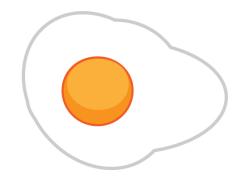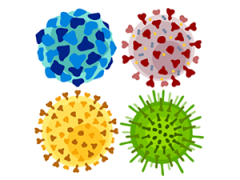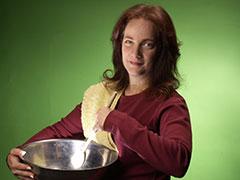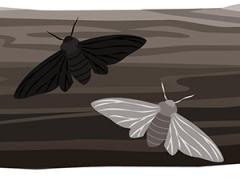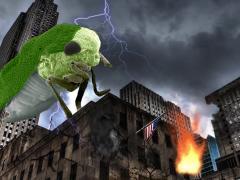Activities
One of the best ways to learn is to play. We have a collection of activities that let you learn biology by playing. You can try a biology experiment or test your knowledge with one of the biology puzzles based on our stories. There are printable and online coloring pages and worksheets that you can use to practice your coloring skills.
Wait, there's more. The Bird Finder tool can help you identify that mystery bird in your backyard. You can also venture into Body Depot where you can learn about your body and the biology that keeps it going. With so many activities you might find it hard to choose, so don't. You can try them all.

A Nervous Experiment
How do you know when your hand touches something? How do you know if something brushes against your shoulder?

Air Pollution
The Phoenix metropolitan area, like many large cities, has problems with air pollution at certain times of the year.

Beat the Heat
In cities across the globe, temperature records are being broken. But even if you don't live in one of the hottest areas, you can still get in trouble if you are outside for too long on a hot day.

Bee Waggle Dance Game
Dancing Honey BeesDid you know that honey bee workers tell their sisters where to find the best flowers and nectar with a dance? It is called the waggle dance.

Bird Finder
Tell us what you know about the bird and we'll help you find it. Here are a few steps to follow:

Catch and Sketch Plankton
Sometimes when we only look at a plant or animal we miss seeing some of their amazing parts and how they are constructed.

Cell Size SIM
Cells are the smallest unit of life. Our bodies are made of hundreds of types of cells, and trillions of different cells.

Collecting Ants
Collecting AntsWhile it can be fun to watch ants outside, or perplexing to find them in your house, one of the most exciting ways to study ants is to keep them in an ant farm so you can
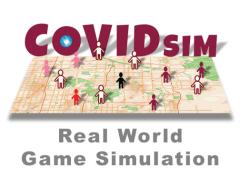
COVID SIM Pandemic Simulation
A COVID-19 Pandemic SimulationOver the last two years, many of us have closely watched the rise and fall of cases of COVID-19 across the globe.

Cracking CRISPR
Cracking CRISPRThe DNA found in most of your cells plays a huge role in making you who you are... and it's not just you - this is the same for every living thing.

Create Your Own Herbarium
Have you ever seen an interesting plant that you wanted to keep? The best way to preserve a plant specimen is to press it and dry it. Dr.
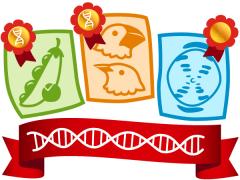
DNA Discovery Awards
Learning About The History of DNA ResearchGenetics–it's the study of inheritance and DNA.

Doctor Know
Play doctor in the 21st century! Practice modern medicine by examining all dimensions of the body, from organs to molecules, as an interconnected system.

Dr. Biology's Virtual Pocket Seed Experiment
Dr. Biology has been busy working on a new seed experiment and he needs your help. He has collected so much information from the experiment that he needs someone to analyze the data.
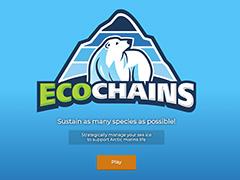
EcoChains
Beyond polar bears and seals, there are many other animals and plenty of plants that depend on Arctic ice. This game is a fun way to learn about the food web in the Arctic.
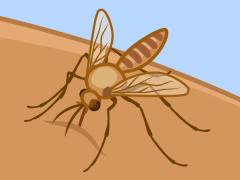
Epic Mosquito Quest
Mosquito Breeding BasicsMosquitoes are insects that affect people across most of the globe. In some areas, they are more dangerous than in others...

Fly Trapping Trials
Have you ever seen small black flies buzzing around your houseplants and wondered what they were? These are most likely fungus gnats (also known as fungus flies).

Genetics Game
Learning the Basics of GeneticsWhether you want to know more about yourself or the world around you, learning the basics of genetics is important.

Hummingbird Lunch
In backyards all over the country we often get to see beautiful birds and hear their calls. One bird is a standout for its beauty, grace and elegance—the hummingbird.

Keys to the Ocean Game
Our world is full of different plants, animals, bacteria, and other life. But how do we know which species is which? How can we identify something that we find?

Let the Germs Begin
Have you ever wondered why you get sick? The answer is germs. Germs are tiny organisms that make you feel sick and cause disease. We come in contact with millions of germs every day.

Life of the Leafcutter
Many animals survive by living in large communities. They rely on each other to survive and depend on cooperation among the community members.

Make Your Own Podcasts
Podcast Tools and Equipment - our two cents worth of advice for 2024Join the revolution. You can now produce podcasts for classroom, school, and beyond.

Manduca Caterpillar Growth Experiment
Global climate change is something that you have probably heard about.

Monster Inheritance
An Introduction to Genetics and InheritanceHave you ever wondered why kids often look like their parents? Why puppies and kittens from the same parents look similar, but not the same?

Mysterious World of Dr. Biology
A Biology Mystery Waiting for You to SolveScience is full of mysteries and unknowns waiting for you to discover.

Nano Building
If you wanted to build a specific molecule, at a scale that is far too small to see, how might you go about it? Learn the basics of building molecules at a nano scale.

Seasoned to the Tilt
Why Does the Earth Have Seasons?Have you ever thought about your favorite season, and why it looks and feels the way it does? Depending on where you live, you may experience tempe

Skeleton Viewer
Learn Human Skeletal AnatomyDid you know there are 206 bones in an adult human skeleton? If you don't count the tiny bones in our ears there are an even 200 bones in the skeleton.

Sooty Selection
An Introduction to Natural SelectionA female giraffe walks up to a tree with leaves just out of reach.
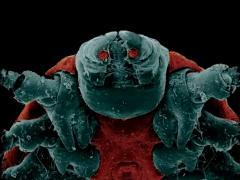
Ugly Bug Contest 2008
We have been working with biologists from Northern Arizona University Imaging and Histology Core Facility,

Ugly Bug Contest 2009
After months of voting a champion has been crowned. Congratulations Snakefly the 2009 Ugly Bug winner.

Using the Scientific Method: The Case of the Mystery Images
Practice the Scientific MethodYou may not know it, but science is everywhere.

Venom!
When was the last time you folded a piece of paper to make a fun shape? Maybe you made a paper plane or tried origami to make a swan.
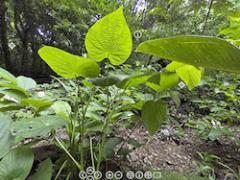
Virtual Reality Tours of Biology
Virtual Tours in BiologyWant to explore the world of biology, but don't have time to take a field trip? Check out our biology virtual reality tours.

When Water Gets Icy
If you've accidentally taken a sip of sea water or had to gargle with salt water, you've probably realized that freshwater and saltwater have some pretty important differences.

Your Dog's Personality
How Well Do You Know Your Dog?How well do you know your dog? You'll find out lots more about your pet's personality by answering the questions in this chart.




















